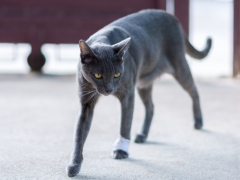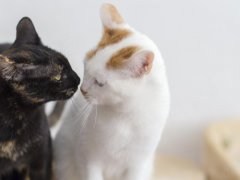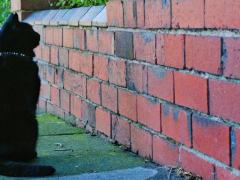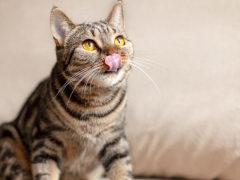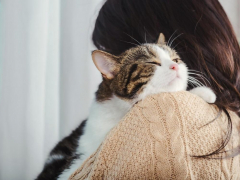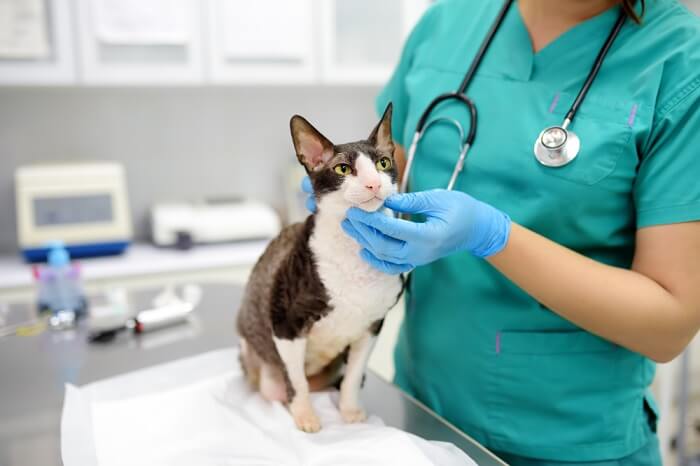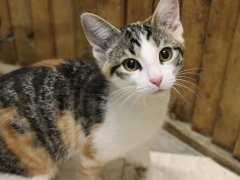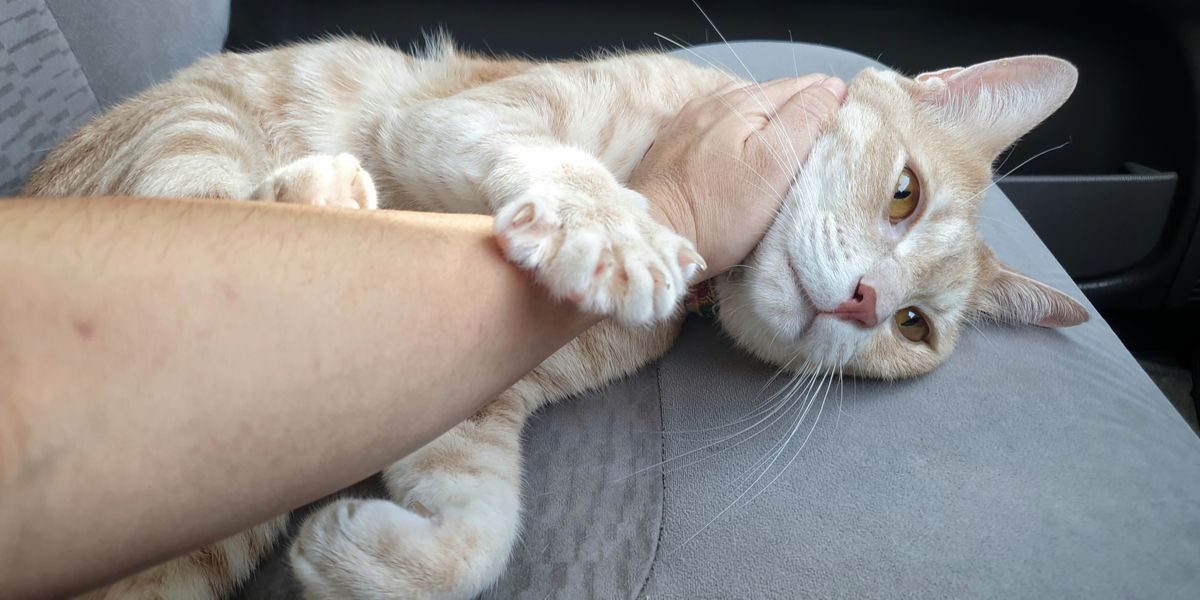
Cats are notorious for being ornery, aloof, and sometimes just plain weird. They exhibit a variety of behaviors that don’t always make sense to us cat owners, but we love them anyway. One of these strange behaviors is ‘making biscuits’ – what’s that all about?
Kneading is a repetitive, rhythmic motion during which cats will push their paws into and out of a soft surface, alternating between paws. Cats love to knead on soft surfaces like blankets, pillows, plush carpeting, a person’s lap, or a couch. Though every cat is different, most exhibit kneading behavior at one time or another.
As is true for many cat behaviors, no one knows exactly why cats knead but there are a few theories, from affection to territory marking, stretching to soothing.
Also Read: 8 Reasons Your Cat Is Pawing And How To Help
Cat Kneading Explained
Kneading is adorable and fascinating to watch. Plus, cats can get so relaxed that their jaws become slack and they start to drool! Kneading is an instinctive behavior in cats that begins soon after birth. Though the exact reason for kneading is unknown, animal experts have a few theories.
1. To Stimulate the Flow of Milk During Nursing
Kneading begins very early in kittenhood, and it’s thought that the ‘making biscuits’ action helps stimulate milk production from the mother’s teat. For some, this behavior continues to adulthood, with cats kneading their owners in reminiscence of their days as a kitten. Your lap is just as warm as their mother’s belly was, so your adult cat could be kneading on you to relive the comfort and security of the time they spent nursing.
2. To Relax
Cats may use this rhythmic movement to soothe themselves, especially after a stressful situation. With the behavior rooted in kittenhood, this repetitive behavior may be a calming activity for cats and a way to release tension. It is often observed that cats knead right before they settle down to sleep.
3. To Stretch Muscles After a Nap
The physical motion of kneading is repetitive and may help cats stretch out after a period of inactivity, such as a nap. Some cats will use only the front paws to knead, while others use all four paws – it can be a bit of a work out!
4. To Prepare a Space Before Sleeping or Giving Birth
Some animal experts suggest the behavior of kneading began with wild female cats – that kneading was involved in preparing nests among tall grass and leaves before giving birth or for the purpose of resting after a day of hunting. This may explain why cats love to knead you if you’re wearing something soft, like a sweatshirt, woolen shawl, or any other soft and supple fabric. These types of materials make great sleeping surfaces. The same way you’d fluff up your pillows and blankets before napping, cats do the same by kneading them.
5. To Mark That Cat’s Territory
Another potential reason for kneading has to do with territorial behavior. Cats have scent glands in their paws, so kneading imparts some of the cat’s personal scent onto the area they’re kneading, effectively marking it as their “territory.” If your cat kneads at you, it’s a compliment – they want to make sure other cats know that you belong to them!
6. Affection
In a similar vein to territorial marking, cats may knead at their owners or other cats out of pure love! Kittens knead at their mothers, with whom they share a strong bond, and this behavior can become linked with trust, love and affection. Take it as a compliment and give a sign of love back, such as a slow blink or a head rub.
7. Attention
Cats may knead out of love, but they may also swiftly learn that making biscuits with their claws on your lap leads to a bit of a reaction! Some cats knead with claws retracted, but others keep them out – ouch!
8. To Indicate a Readiness to Mate
There are some theories that kneading is involved in hormonal and mating behaviors between cats.
Also Read: Why Doesn’t My Cat Knead?
Tips for Cat Parents
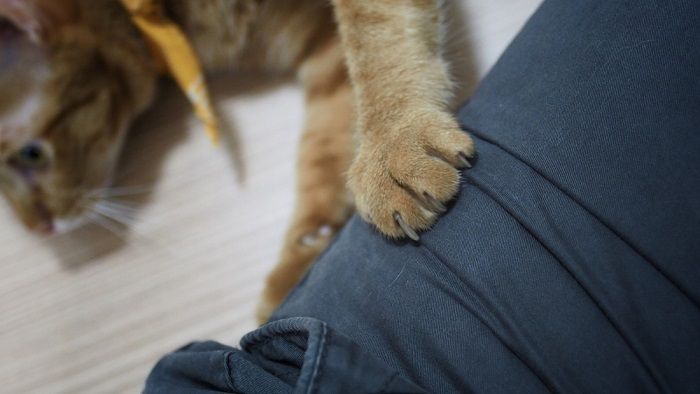
Some owners enjoy their cat kneading on them, but it can be uncomfortable if claws aren’t retracted.
Not all cats are the cuddly type, but those who are can often be found curled up in their owner’s lap. If you have a lap cat, you’ve likely experienced kneading up close and personal. If your cat likes to extend their claws when kneading, though, this adorable behavior could end up becoming uncomfortable or even painful for you.
Some suggest that a cat kneading its owner is a sign of affection and flattery. The cat is basically saying it really loves you and enjoys your company. Even so, kneading can become bothersome or even a hassle if your cat wants to knead on you all the time. There’s also the possibility that kneading can become painful if your cat doesn’t retract his claws.
Also Read: New Cat Owner Anxiety: Why It Happens & How To Overcome It
So, how do we become more comfortable with kneading?
Redirect to Another Surface
If you don’t want your cat to knead on you or on the furniture, try to gently pick them up and place them on another surface, such as their own bed or a soft blanket. Be consistent, placing them onto the same place each time, so that they learn that this particular bed or blanket is the correct place to knead when they want to perform this behavior. You can use pheromone sprays such as Feliway products to encourage your cat to knead on other more appropriate surfaces.
Distract
You can direct your cat’s behavior by distracting them with a toy or treat. When your cat starts to knead, offer the treat or toy – eventually, your cat should start favoring the new behavior.
Minimize the Discomfort
Kneading is often an affectionate behavior, and many owners are caught between being loath to deter it, but still needing to ensure they aren’t being accidentally hurt by sharp claws. Have a thick blanket handy and place it on your lap when you’re sitting down so your cat can safely knead the blanket without hurting you. It’s also good practice to keep your cat’s nails trimmed to prevent them from hooking on clothing or hurting you.
Don’t Shout!
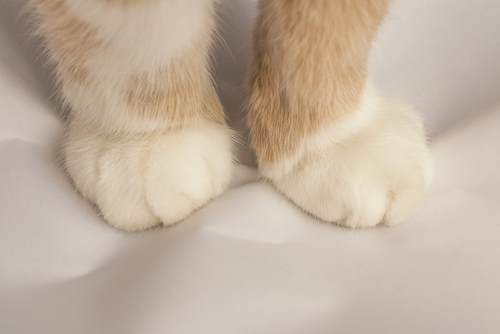
Cats have scent glands in their paws, so kneading imparts some of the cat’s personal scent onto the area they’re kneading.
It’s understandable that kneading can be uncomfortable and therefore cause some irritation to cat owners. However, it’s important that you never punish your cat for kneading. Kneading is an instinctive behavior for cats, and some are highly motivated to perform it. Punishment will cause stress and anxiety to your cat, and should always be avoided.
Cats knead for a variety of reasons. It’s a common behavior, and one that many cats seem highly motivated to perform. It might even be a real compliment of the trust and love your cat has for you! Unless the kneading behavior is truly bothersome, try letting your cat knead in peace and try to enjoy it.
Also Read: 8 Reasons You Should Never Punish Your Cat
Relevant Articles:
- Are My Cats Playing or Fighting?
- Why Do Cats Groom Each Other? Reasons Why Cats Socially Groom
- How to Stop Your Cat Scratching Furniture
Frequently Asked Questions
Is my cat’s kneading normal?
Yes, kneading is a natural behavior for cats. Though we may not know exactly why they do it, it’s a behavior we see in wild cats which suggests domestic cats inherited the instinct from their wild ancestors.
Should you let your cat knead?
Kneading is an instinctive behavior for cats, and should be allowed unless it’s causing undue discomfort or damage. If you want to stop it, try distraction or redirecting onto a safe surface. Never punish your cat for kneading.
Why do cats knead and bite blankets?
It all comes down to instinctive behavior rooted in kittenhood. Kneading and suckling behavior mimics what your cat would have done while nursing. It's a form of comforting behavior that usually means that your cat feels cozy and safe.
